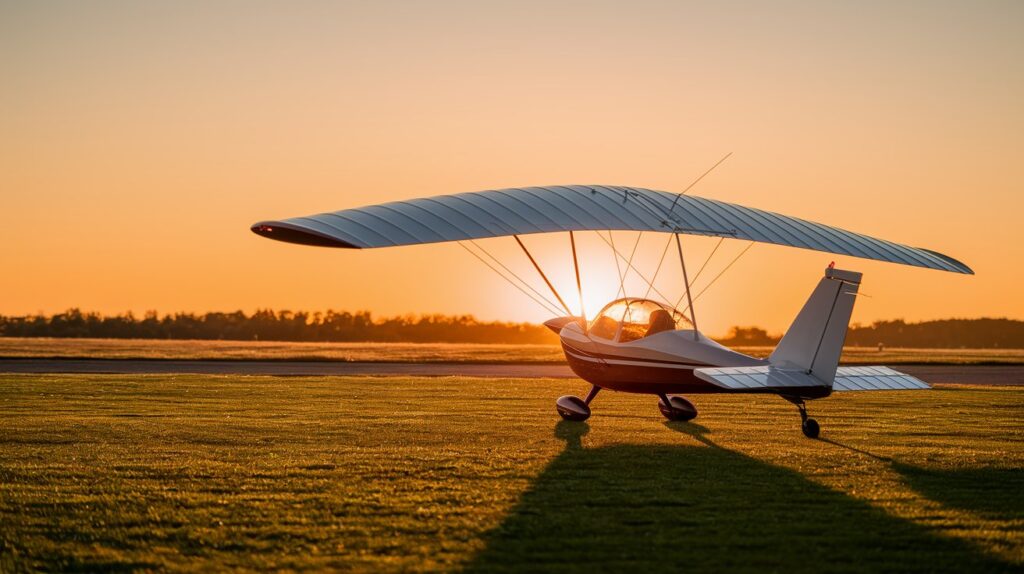The aviation industry is on the cusp of a new era. As global transportation systems evolve, traditional assumptions about aircraft size, mission scope, and propulsion are being challenged. At the forefront of this shift is a dynamic sector with immense potential: ultralight and light aircraft.
The latest research from MarketsandMarkets projects that the ultralight and light aircraft market will grow from USD 10.17 billion in 2024 to USD 17.29 billion by 2029, at a robust CAGR of 11.2%. This impressive growth is being driven by a convergence of technological innovation, cost pressures in commercial aviation, and the pursuit of cleaner, more accessible airborne mobility.

Reimagining Aircraft Design Through Electrification
One of the most significant transformations in the ultralight and light aircraft sector is the transition from conventional to electric and hybrid-electric propulsion. These technologies offer aircraft designers more flexibility, reduced noise footprints, and the promise of zero-emission flight. For aircraft flying short regional routes or serving as platforms for training, surveillance, or logistics, electric propulsion makes operational and environmental sense.
Download PDF Brochure @ https://www.marketsandmarkets.com/pdfdownloadNew.asp?id=181448279
This trend aligns with global efforts to decarbonize the aviation sector. Governments, manufacturers, and operators alike are investing in electric airframes and retrofitting existing models to comply with tightening emissions regulations and meet corporate sustainability goals.
Unmanned Aircraft: Expanding the Market’s Reach
The unmanned segment of the market is emerging as a high-growth pillar, offering both scalability and versatility. Once limited to military or hobbyist use, unmanned aerial vehicles (UAVs) in the ultralight category are now being used for critical commercial applications.
This includes precision agriculture, where drones support crop health analysis and pesticide application. In energy and infrastructure sectors, they assist with inspecting power lines, pipelines, and wind turbines. Law enforcement, search and rescue operations, and environmental monitoring agencies are also deploying unmanned aircraft for rapid response and data collection.
As these industries continue to realize the cost-saving and safety benefits of unmanned aviation, adoption is expected to rise exponentially—fueled by lighter airframes, AI integration, and improved battery life.
Aftermarket Services Reflect the Sector’s Maturity
The strong presence of aftermarket demand is a clear indicator of growing operational adoption. Light aircraft, with their ability to carry larger payloads compared to ultralights, are increasingly being integrated into business and utility fleets. This leads to greater wear-and-tear and consistent demand for maintenance, component replacement, avionics upgrades, and retrofits.
Fleet operators and service providers are investing in the aftermarket to ensure aircraft uptime, safety, and performance, creating a robust secondary market for MRO (maintenance, repair, and overhaul) activities and aftermarket part suppliers.
Commercial Aviation’s New Edge: Agility and Reach
Corporate travel continues to be a major driver of growth in the civil and commercial end-use segment. Executives and professionals are increasingly choosing light aircraft to avoid the inefficiencies and delays of commercial airline routes, especially for remote or last-minute trips.
These aircraft offer direct access to smaller airports and private airstrips, increasing flexibility and reducing transit time. With global corporations seeking operational agility and cost control, demand for light aircraft as executive shuttles and time-saving tools is expected to rise further.
North America Sets the Pace for Innovation
North America remains the largest and fastest-growing region in the ultralight and light aircraft market. The region benefits from a deep talent pool of engineers, pilots, and aerospace professionals, as well as a mature regulatory and infrastructure environment that supports both innovation and commercialization.
The presence of advanced manufacturing hubs, academic partnerships, and venture-backed aviation startups further strengthens North America’s leadership in developing next-generation aircraft for civilian, commercial, and defense use.
Market Leaders and Innovators
The competitive landscape features both legacy manufacturers and agile newcomers, working to redefine the boundaries of light aviation. Prominent companies include:
- Textron Inc. (United States), a key player in general and business aviation
- Bell Helicopters (United States), well known for vertical lift innovation
- Pilatus Aircraft (Switzerland), with a strong reputation in short-takeoff utility aircraft
- Flight Design General Aviation (Germany), an early leader in light sport aircraft
- Air Tractor (United States), a staple in agricultural aviation markets
- Autogyro (Germany) and Aeropro (Slovakia), innovators in niche ultralight categories
These firms are expanding their portfolios, investing in R&D, and forging partnerships to meet rising demand across multiple sectors.
Ask for Sample Report @ https://www.marketsandmarkets.com/requestsampleNew.asp?id=181448279
The Path Ahead: A Scalable, Sustainable Aviation Ecosystem
With advancements in propulsion, automation, and airframe materials, ultralight and light aircraft are becoming essential tools for a wide array of missions—from regional connectivity and training to aerial work and emergency response.
As the line between manned and unmanned flight continues to blur, and as infrastructure adapts to support smaller airframes at scale, this sector is uniquely positioned to thrive in the evolving aviation ecosystem.
Companies and institutions that align their strategies to embrace light aviation will not only unlock new revenue streams but also contribute to a more sustainable, responsive, and connected air transportation network.